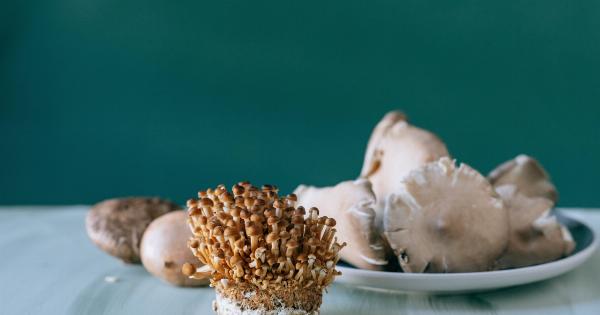Spastic colitis, also known as irritable bowel syndrome (IBS), is a common digestive disorder that affects the large intestine. It is characterized by symptoms such as abdominal pain, bloating, gas, diarrhea, and constipation.
Although the exact cause of spastic colitis is unknown, various factors like diet, stress, hormonal changes, and certain medical conditions can trigger or worsen its symptoms.
The Role of Diet in Controlling Spastic Colitis
Diet plays a crucial role in managing spastic colitis symptoms. While there is no one-size-fits-all diet for IBS, making certain dietary modifications can help reduce symptoms and improve quality of life for individuals with spastic colitis.
Identifying Food Triggers
One of the primary approaches to controlling spastic colitis through diet is identifying and eliminating food triggers. Certain foods and beverages can aggravate the symptoms of IBS in some individuals. Common triggers include:.
- High-fiber foods: While fiber is generally beneficial for digestive health, it can cause problems for individuals with spastic colitis. Insoluble fiber, found in foods like whole grains, seeds, and nuts, can worsen gas and bloating. Soluble fiber, on the other hand, may help alleviate symptoms and can be found in foods like oats, barley, and fruits.
- Gas-producing foods: Foods such as beans, lentils, onions, garlic, cabbage, broccoli, and carbonated beverages can increase gas production in the digestive system, leading to bloating and discomfort.
- Dairy products: Some individuals with spastic colitis are intolerant to lactose, the sugar found in milk and dairy products. Consuming dairy can cause diarrhea, abdominal pain, and other gastrointestinal symptoms in such individuals.
- High-fat foods: Fatty foods like fried foods, creamy sauces, and fatty meats can trigger symptoms in some people with spastic colitis. These foods can be harder to digest and may worsen diarrhea or constipation.
- Caffeine and alcohol: Both caffeine and alcohol can stimulate the intestines and worsen symptoms in people with spastic colitis. It is advisable to limit or avoid their consumption.
The Low FODMAP Diet
The low FODMAP diet is a popular and effective approach for managing spastic colitis symptoms. FODMAP stands for fermentable oligosaccharides, disaccharides, monosaccharides, and polyols.
These are types of carbohydrates that can ferment in the gut, leading to gas, bloating, and other digestive symptoms.
The low FODMAP diet involves restricting or avoiding foods high in FODMAPs for a certain period, usually under the guidance of a healthcare professional or registered dietitian.
After an elimination phase, individual FODMAPs are gradually reintroduced to identify specific triggers for each person.
Foods high in FODMAPs include:.
- Wheat and other grains
- Lactose-containing foods
- Legumes
- Some fruits, such as apples, cherries, and watermelon
- Some vegetables, such as onions, garlic, and cauliflower
- Polyols, such as certain artificial sweeteners and stone fruits like avocados
Other Dietary Guidelines for Spastic Colitis
In addition to identifying food triggers and following the low FODMAP diet, there are other dietary guidelines that can help control spastic colitis symptoms:.
- Eat smaller, more frequent meals: Consuming large meals can put additional strain on the digestive system, leading to symptoms. Opting for smaller, more frequent meals can ease the burden on the gut and help prevent discomfort.
- Drink plenty of water: Staying well-hydrated is essential for maintaining a healthy digestive system. Drinking adequate water can prevent constipation and support overall digestive health.
- Avoid excessive caffeine and alcohol: As mentioned earlier, caffeine and alcohol can stimulate the intestines and exacerbate symptoms. It is important to limit their consumption or avoid them altogether.
- Reduce stress and practice relaxation techniques: Stress is known to worsen spastic colitis symptoms. Engaging in stress-reducing activities like yoga, meditation, deep breathing exercises, and regular exercise can help manage symptoms.
Probiotics and Spastic Colitis
Probiotics are beneficial bacteria that can promote a healthy gut microbiome. They have been found to alleviate symptoms of spastic colitis in some individuals. Probiotics can be consumed through certain foods or supplements.
Probiotic-rich foods include:.
- Yogurt
- Kefir
- Sauerkraut
- Kombucha
- Kimchi
It is important to note that specific strains and dosages may vary in their effectiveness, and consulting with a healthcare professional or dietitian is recommended before starting any probiotic supplements.
Maintaining a Balanced Diet
While making dietary changes to manage spastic colitis symptoms, it is crucial to maintain a balanced diet and ensure adequate intake of essential nutrients.
Incorporating a variety of fruits, vegetables, lean proteins, whole grains, and healthy fats is key to providing the body with necessary nutrients and supporting overall gut health.
It is also important to listen to your body and pay attention to how different foods affect your symptoms. Keeping a food diary can help identify patterns and create a personalized approach to managing spastic colitis through diet.
Conclusion
Although spastic colitis can be a challenging condition to manage, making dietary modifications can significantly reduce symptoms and enhance overall well-being.
By identifying and avoiding food triggers, following the low FODMAP diet, incorporating probiotics, and maintaining a balanced diet, individuals can regain control over their digestive health and enjoy a better quality of life.






























